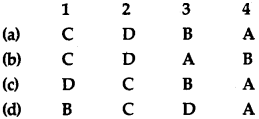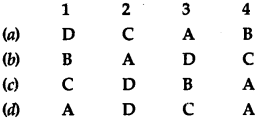Question 1.
In what ways pressure groups and movements exert influence on politics?
Answer:
Pressure Groups influence politics in the following ways:
i) The pressure groups conduct information campaigns to increase public
awareness on a particular issue. They organize meetings and influence the
media by drawing the attention to their issues. They try to gain public
support for their cause.
ii) The pressure groups organize strikes and dharnas to voice their interests. They stop the normal working of the governmental functions by strikes. This is done to show their protest and dissatisfaction with the policy concerned.
iii) Business group often employ professional lobbyists or sponsor expensive advertisements. Some persons from pressure groups or movement group may participate in official bodies and committees that offer advice to the government.
Question 2.
Describe the forms of relationship between pressure groups
and political groups.
Answer:
The relationship between political
parties and pressure groups can take various forms: In some cases political
parties pressure groups they do so form.
(a) To increase their influence
in the public. Many students’ organizations in India are set up by the
political parties.
(b) In some cases political parties are formed out of the pressure groups. In cases of long struggle for their causes, these pressure groups eventually take the shape of political parties and contest elections.
(c) In some cases political parties and pressure groups are in opposition to each other. They have different and conflicting views and ideas. They can negotiate with each other on such conflicting parties. In some cases political parties form pressure groups. They do matters.
Question 3.
Explain how the activities of pressure groups are useful in
the functioning of a democratic government.
Answer:
1) A pressure
group is an organised or an unorganised body that seeks to promote its
interests. It is formed by the people having common interest, occupation and
opinions. It aims to influence the government policies and form the public
opinion.
2) They do not aim to attain power in the government. They just seek their own interest. These interest can be of a to promote specific section of the society or of the whole society in general.
3) It is also said that sectional interest groups promote only the interest of their own section rather than society in general.
4) It is also argued that they are not answerable to the general public for their actions.
5) But, these are half truths. Pressure groups help people to voice their demands. It provides platform for the people from weaker sections of society to raise their issues and interests.
6) Pressure groups help in maintaining a balance between the demands of various groups of society.
Question 4.
What is a pressure group? Give a few examples.
Answer:
A pressure group is an organised or an unorganised body that promotes
its particular interest within a society. They exert influence on public
officials and agencies for their interest. They direct their efforts towards
influencing the government policies and forming public opinion. They do not
aim to share the political power.
Examples :
Narmada Bachao
Andolan and movementfor the right to information
Question 5.
What is the difference between a pressure group and a
political party?
Answer:
1) A pressure group is an organized or an
unorganized body that seeks to promote its interests. It is formed by the
people of common interests, occupations and opinions. It aims to influence the
government policies and form the public opinion. It does not aim to directly
control or share the political power. It works for the common interest of the
group alone.
2) A political party seeks to attain political power in the country by contesting the elections. They have their own ideology and vision and represent various interests.
Question 6.
Organisations that undertake activities to promote the
interests of specific social sections such as workers, employees, teachers,
and lawyers are called groups.
Answer:
Organisations that
undertake activities to promote the interests of specific social sections such
as workers, employees, teachers, and lawyers are called pressure groups.
Question 7.
Which among the following is the special feature that
distinguishes a pressure group from a political party?
(a) Parties take
political stances, while pressure groups do not bother about political issues.
(b) Pressure groups are confined to a few people, while parties involve
larger number of people.
(c) Pressure groups do not seek to get into
power, while parties do.
Answer:
(c) Pressure groups do not seek
to get into power, while parties do.
Question 8.
Match List I (organizations and struggles) with List II and
select the correct answer using the codes given below the lists.
| List I | List II |
| 1. Organisations that seek to promote the interests of a particular section or group | A. Movement |
| 2. Organisations that seek to promote common interest | B. Political Party |
| 3. Struggles launched for the resolution of a social problem with or without an organisational structure | C. Sectional interest groups |
| 4. Organisations that mobilize people with a view to win political power | D. Public Interest Group |

Answer:
(b)
![]()
Question 9.
Match List I with List II and select the correct answer
using the codes given below the lists:
| List I | List II |
| 1. Pressure group | A. Narmada Bachao Andolan |
| 2. Long term movement | B. Asam Gana Parishad |
| 3. Single issue movement | C. Women’s movement |
| 4. Political party | D. Fertilizer dealers association |

Answer:
(a)
![]()
Question 10.
Consider the following statements about pressure groups and
parties.
A. Pressure groups are organized expression
of the
interests and views of specific social sections.
B. Pressure groups take
positions on political issues.
C. All pressure groups are political
parties.
Which of the statements given above are correct?
(a) A,
B, and C
(b) A and B
(c) B and C
(d) A and C
Answer:
(b) A and B
Question 11.
Mewat is one of the most backward areas in Haryana. It used
to be a part of district Gurgaon and Faridabad. The people of Mewat felt that
the area will get better attention if it were , to become a separate district.
But political parties were indifferent to this sentiment. The demand for a
separate district was raised by Mewat Educational and Social Organisation and
Mewat Saksharta Samiti in 1996, Later Mewat Vikas Sabha was founded in 2000
and carried out a series of public awareness campaigns. This forced both the
major parties, Congress and the Indian National Lok Dal to announce their
support for the new district before the assembly elections held in February
2005. The new district came into existence in July 2005,
In this example
what is the relationship that you observe among movement, political parties
and the government? Can you think of an example that shows a relationship
different from this one?
Answer:
Most of the movements are issue
specific that seek to achieve a single objective. In this case also, once the
demand for separate district of Mewat was raised, the political parties could
not ignore it to serve their political interest. Once, the movement got the
support of the political parties it became easy for the government to create a
separate district of Mewat after winning the election. Other example :
Creation of states such as Jharkhand, Uttrakhand and Chattisgarh.